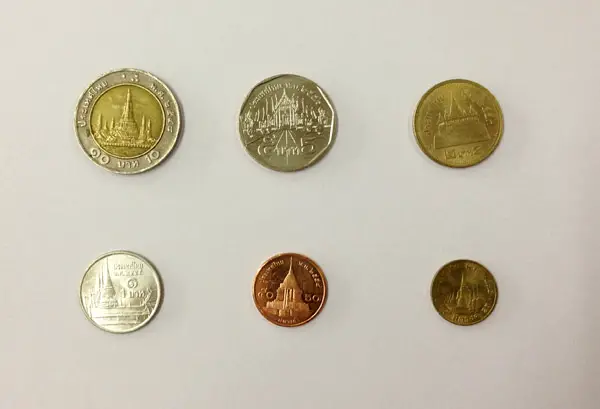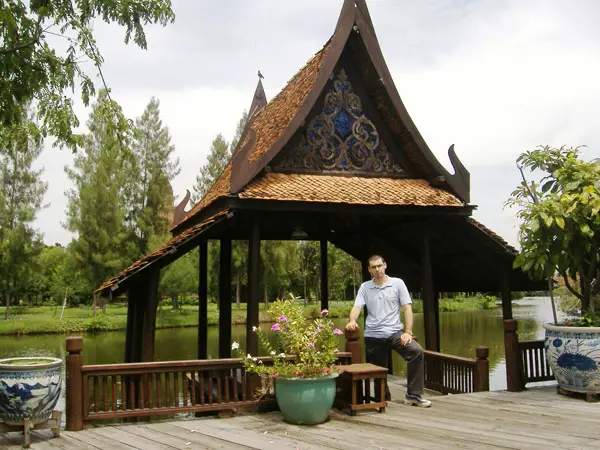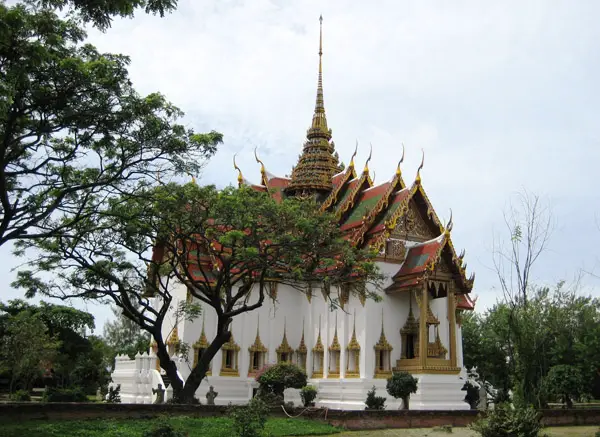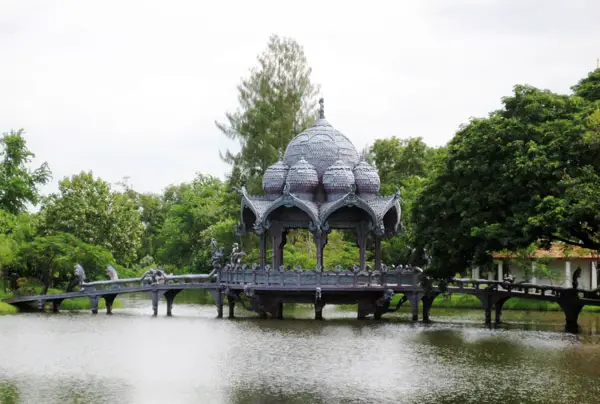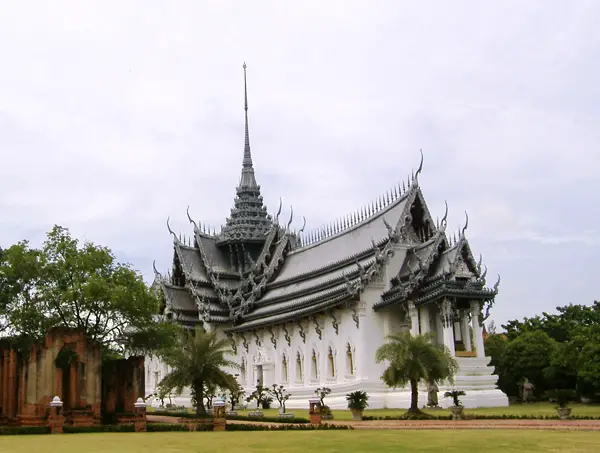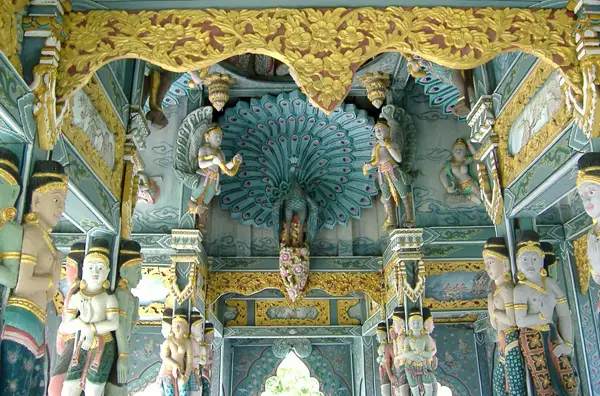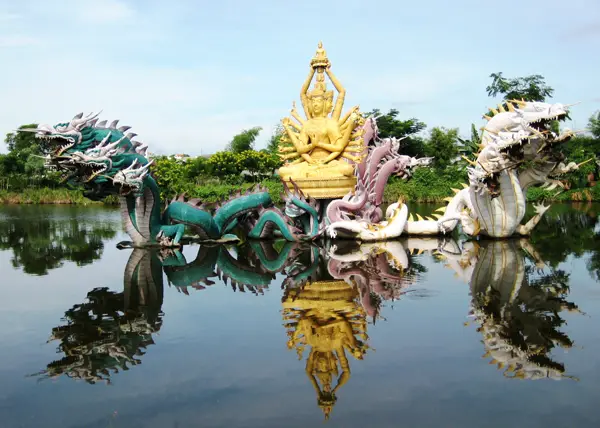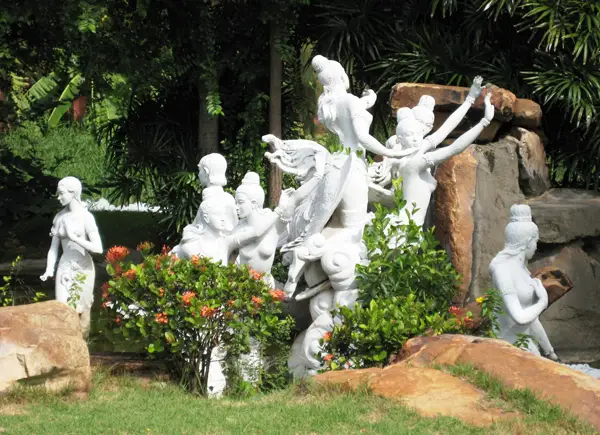How well-versed are you in the subtle intricacies of Thai culture? Let’s have a short quiz. What temples are depicted on the reverse of the four most used Thai coins? Stop and think. If your answers were Wat Phra Kaew, or the Temple of the Emerald Buddha, for the 1 baht coin; Wat Saket, or the Golden Mount, for the 2 baht coin; Wat Benchamabophit, or the Mable Temple, for the 5 baht coin; and Wat Arun, or the Temple of the Dawn, for the 10 baht coin, then you have successfully passed to round two.
But are you truly knowledgeable when it comes to the less used satang coins? There are five satang coins in circulation today, although only the “higher denominations” of 25 and 50 satang are still used in everyday life, while the 1, 5 and 10 satang coins are almost exclusively used in banking transaction. So, what are the temples engraved on their reverse? I’ll give you a tip. Unlike the coins detailed in the previous paragraph, which all depict temples in Bangkok, the satang coins make tribute to temples from the north and south of Thailand.
If you’ve had some luck with the first question, both Thais and foreigners would have a hard time naming the temples on the satang coins. Unless you’re an expert in Thai numismatics, the study or collection of coins and banknotes, it is unlikely that you would know that Wat Phrathat Haripunchai from Lamphun is on the reverse of the 1 satang coin; Phra Pathom Chedi from Nakhon Pathom, the tallest stupa in the world, is on the 5 satang coin; Phra That Choeng Chum from Sakon Nakhon is on the 10 satang coin; Wat Phra Mahathat from Nakhon Si Thammarat is on the 25 satang coin; and, lastly, Wat Phra Doi Suthep from Chiang Mai, with its iconic golden chedi, or Buddhist stupa, and ceremonial umbrella, is on the 50 satang coin.
Apart from being major tourist attractions, all these temples are also highly revered by Buddhist believers throughout Thailand (and beyond) and their selection by the Bureau of Royal Thai Mint stands as clear proof of that. But the Kingdom of Thailand abounds in thousands of other equally valuable religious structures and to visit them all, even for the local population or to the long-term expat residents, would be a tremendous feat.
Theoretically, you could take a year off from work and tour the country from one end to the other, in the meantime depleting your personal finances, or you could simply go on a one-day trip to Ancient Siam in Samut Prakan. It is also known in Thai as Muang Boran, which literally translates as “Ancient City,” which was the park’s former name. Dubbed as the world’s largest outdoor museum, Ancient Siam is a 320-acres (or 600 rais, in the Thai traditional unit of measurement) park roughly constructed in the shape of Thailand.
The project was the brainchild of Prapai “Lek” Viriyaphant, a Thai millionaire and maecena of the Thai arts, who is also “to blame” for two other equally magnificent structures, the Sanctuary of Truth, an all-wooden temple in Pattaya and Erawan Museum, the statue of a three-headed elephant, also located in Samut Prakan. Although Khun Lek passed away in 2000 at the age of 86, his legacy continues to benefit the understanding of Thai culture both within the country and internationally.
What started as an idea for a golf course with miniature Thai-style temples and palaces to be spread around the course for the enjoyment, cultural immersion and education for the players, ended up as an open-air museum which now features 116 structures representing Thailand’s most famous monuments and architectural designs. The change from golf course to museum was made when Khun Lek realised that many of the original structures he wanted to reproduce in miniature on his golf course were severely damaged. Making good use of his immense wealth, he then decided to create Muang Boran, a place where he could recreate, in actual size or scaled down, the most important Thai architectural jewels.
Although Khun Lek was already a self-taught expert in Thai culture, to faithfully replicate so many buildings and ensure historical accuracy, he asked and received assistance from the National Museum. The idea to build each monument in their correct location geographically within the Ancient City’s Thailand-shaped grounds was brilliant. On top of that, the structures selected to dot around the park represent real pieces of art from different time periods, ranging from the pre-historic era to Dvaravati, Srivichai, Lopburi, Lanna, Lang Chang, Sukhotai, U-tong, Ayutthaya, Thonburi, and Rattanakosin. This basically equals to a millennium of Thai history which you could explore in a single sunny day and gain first-hand experience of the history, cultures, religions, arts and customs of Thai people from time immemorial to present day.
Construction of the museum started in 1963 and, almost a decade later, in 1972, Muang Boran was officially opened to the public with great fanfare. Among the vast gardens filled with trees, waterfalls, vegetation, and small hills, the visitors can explore some of the most well-known religious building in Thailand.
The Grand Palace of Ayutthaya is considered la pièce de résistance, as this structure actually doesn’t exist anymore as it was destroyed by the Burmese army when they sacked Ayutthaya in 1767. Also known as Sanphet Prasat Palace, the white palace and its grey roof with mother of pearl inlaid doors and golden interiors, was built after painstaking research in the Ayutthaya school of architecture, a distinctive style which dominated the landscapes during Siam’s Ayutthaya period.
It’s difficult to mention all the highlights of the park as they are, anyway, better experienced on site, but it is certainly worth mentioning that, on an artificial hill, 54 meters high and 66 meters wide, the highly contested temple of Prasat Phra Wihan (Preah Vihear) stands reproduced at a 1:2 scale in Si Sa Ket “province” on the “border” with Cambodia.
While ownership of the temple is still disputed at The Hague’s International Court of Justice, the English-language Guide to Muang Boran (published by the park administration in 2004) states that “Preah Vihear now belongs to Kingdom of Cambodia. In the geographical aspect, Prasat Phra Wihan stands within the Thai boundary because all small streams that come from the top of the hill run down directly into Mun River in northeastern Thailand. Also, from the Thai border, Prasat Phra Wihan is more easily accessed than from Cambodia. The local people in the Northeast normally walk up by the streams to the summit of the hill while the Cambodians have to climb up broken staircases which are too steep to climb comfortably.”
Prapai Viriyaphant’s life philosophy and concept behind Muang Boran is stated in the introduction to Guide to Muang Boran. Khun Lek strongly believed that “man must know the events of the past” but as “the morality of the world population is deteriorating,” Ancient Siam has been created to “remedy the existing moral deterioration of human society” and to help Thai people better understand their roots.
The area around the Old Market Town gives visitors the chance to experience traditional Thai crafts and purchase souvenirs. It is highly recommended that you purchase there the guide to the park as most of the structures lack any kind of descriptions which you could then read in the guide. Using the fold-out map at the end of the guide, with each of the 116 buildings clearly labelled and numbered, will make sure that your time at Ancient Siam will be well spent.
Ancient Siam is located in Samut Prakan’s Old Sukhumvit Road, about 30km southeast of Bangkok and a 40-minute drive from Suvarnabhumi Airport. It can be reached by a variety of means of transportation. One route is to take the BTS to Bearing, the final station on the Sukhumvit Line and, from here, a 120-baht taxi ride to Ancient Siam. If you drive your own car, take the expressway towards Samut Prakan until you reach the Samrong-Samut Prakan exit and turn left at the Samut Prakan intersection. The museum is at Km. 33 on the Old Sukhumvit Road. If you live around the Southern Bus Terminal in Bangkok’s Pinklao area, take the Pinklao-Paknam air-conditioned bus No.511 to the end of the line and then change to the minibus No.36 which will drop you off at the entrance of the park.
Since 2004, entry prices have gone up fivefold and, unfortunately, the park’s administration has put in place a double pricing system, with foreigners paying double what Thai nationals do. So, for foreigners, the entry fee stands at 500 baht for adults and 250 baht for children. In case you work legally in Thailand and can show your Work Permit, you can get the Thai price. Private guides for individuals are available in both Thai and English, while trams can be hired for large groups.
Also for a fee, you can rent golf carts and bicycles or you can bring your own vehicles in to move freely around the massive outdoor museum. Additionally, Ancient Siam puts at the customers’ disposal banquet services, conference halls, seminar rooms, overnight stays in single or double rooms and sleeping halls. A vast garden is perfect for outdoor activity stations, filming and wedding receptions. To find out more details about pricing and reservations, visit their website or contact them by phone at 02 709 1644 or via email at info[at]ancientsiam[dot]com.
Now, go on a virtual tour of Ancient Siam:
Initially published in Mango Metro (October 2013, Vol. 7, No.11)
